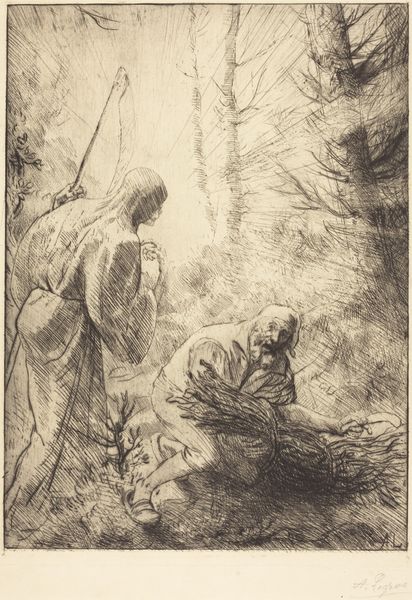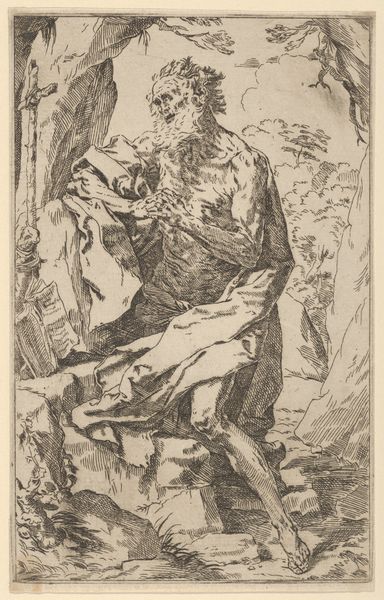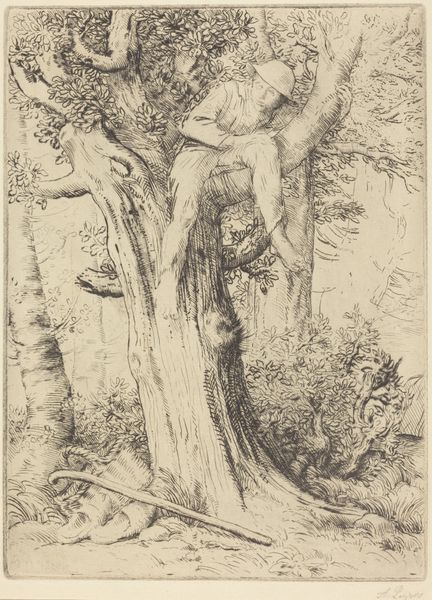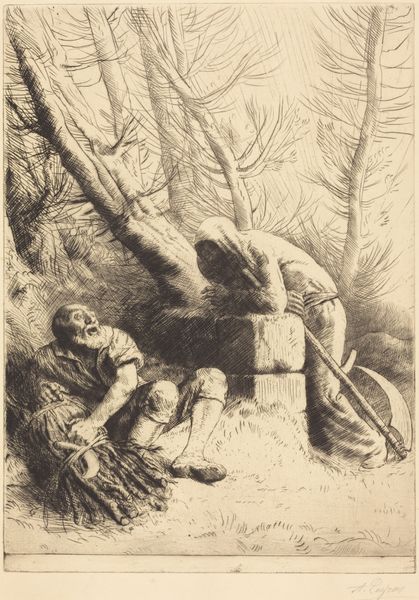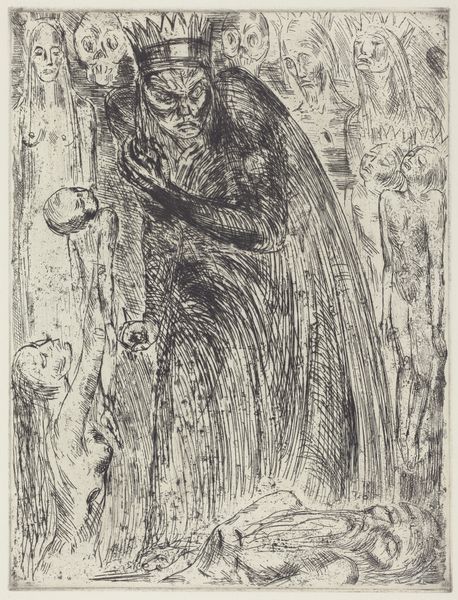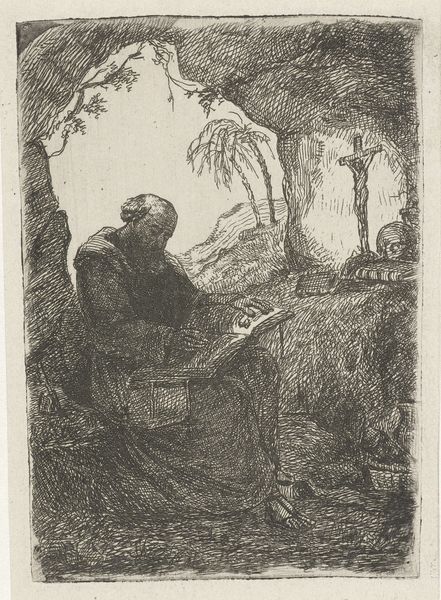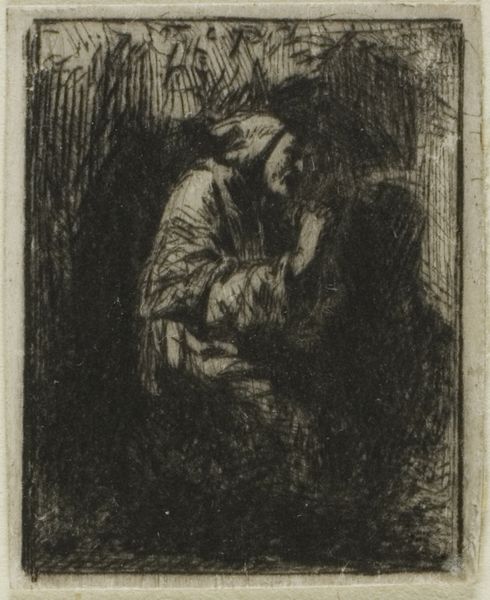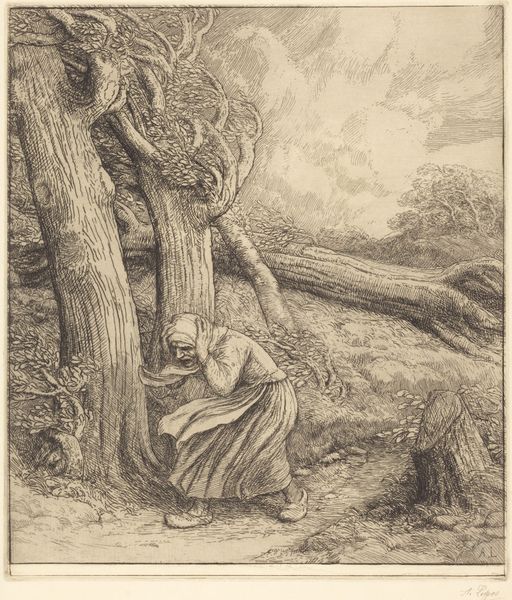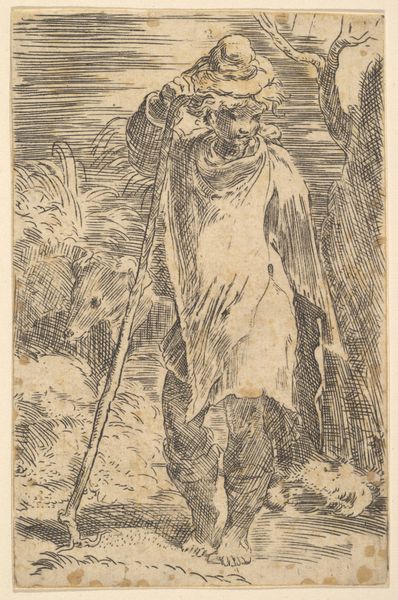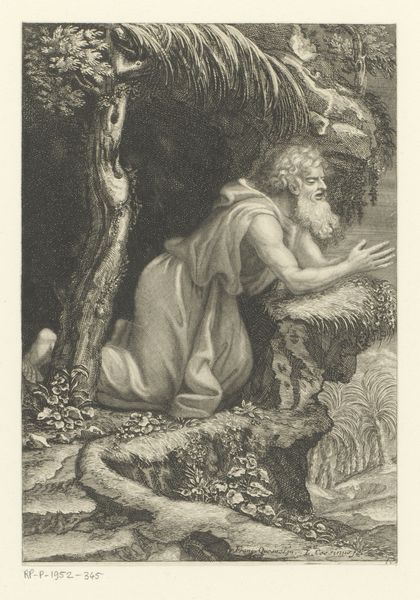
drawing, print, etching, pen
#
drawing
#
ink drawing
#
pen drawing
# print
#
etching
#
landscape
#
figuration
#
pen
Copyright: National Gallery of Art: CC0 1.0
Editor: Here we have Alphonse Legros’s etching "The Prodigal Son, 3rd plate." The figure's posture and tattered clothing evoke such a powerful sense of remorse and destitution. What stands out to you in this depiction? Curator: It's crucial to consider how images like this functioned in their historical context. Biblical scenes were not simply illustrations; they carried immense cultural weight. Legros’s print participates in a long tradition of representing religious narratives, but it also speaks to broader societal concerns about morality and redemption. Think about the intended audience – were these prints meant for private devotion, or were they circulated more widely, shaping public perceptions of these stories? Editor: That’s a great point. I hadn't really thought about how its accessibility as a print might shape its meaning. The emotional intensity seems dialed up here; do you see any ways that Legros manipulates visual elements to get an emotional response? Curator: Consider the role of the landscape. It’s not just a backdrop, it is a crucial visual and metaphorical element, the trees framing the figure and fencing in the background acting like social and psychological restraints. How does the rendering, achieved through delicate etching, contribute to the emotional tenor of the work? Does it emphasize his vulnerability, perhaps mirroring social structures that can leave individuals feeling exposed? Editor: Yes, the contrast between the textures emphasizes his isolation! I was focused on his figure. Now, understanding the historical context and noticing how it enhances certain themes, this piece holds so much more meaning for me! Curator: Exactly! Examining how these images were consumed helps us to see them not just as representations, but as active participants in shaping beliefs. And, conversely, how established beliefs inform artistic choices.
Comments
No comments
Be the first to comment and join the conversation on the ultimate creative platform.
